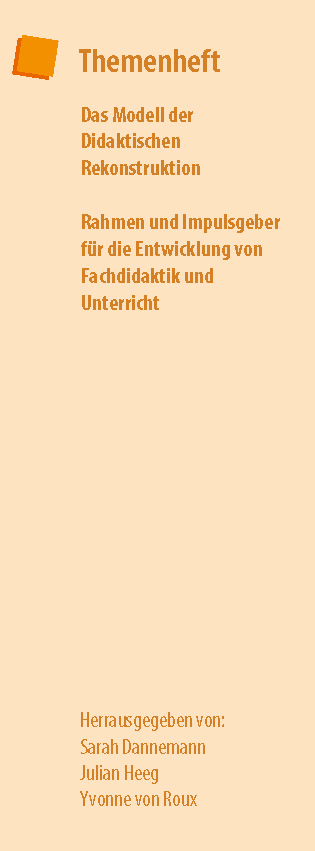Educational Reconstruction as a Planning and Research Framework
Scientific Clarification, Design and Evaluation of a University Course on Learning and Memory
DOI:
https://doi.org/10.11576/hlz-2548Keywords:
Educational reconstruction, teacher education, students’ (mis)conceptions, scientific myths (neuromyths), learning and memory, conceptual change textsAbstract
Empirical studies show that university students retain misconceptions about learning and memory (neuromyths) and transmissive beliefs about teaching and learning throughout their studies. These findings call into question whether university teacher education’s general goal of providing pre-service teachers with an appropriate concept of learning is being met. To better support pre-service teachers in constructing scientifically-appropriate conceptions about teaching and learning, the project described in this article transferred the Model of Educational Reconstruction to university education – employing it as a planning and research framework to design and evaluate the university course Brain-friendly Learning – Concept or Myth?. This article presents the Model of Educational Reconstruction for Higher Education (ERM-HE), highlighting its differences to other models. It outlines how a scientific clarification including different analysis was used as a theoretical foundation for the course at hand. The article also presents how the three learning elements (1) interleaved teaching of content, (2) experiences with learning experiments, sustainable learning methods, and neurodidactic principles and (3) conceptual change texts were constructed. Transferrable concepts, implementation tips, and online materials are provided to encourage further use. An experience report summarizes the evaluation results and discusses the practicality and innovation of ERM-HE for constructive learning at universities. In brief, the pre-sented example concerning learning and memory shows that the ERM-HE is applicable to university education, that the course Brain-friendly Learning – Concept or Myth? had positive effects on pre-service biology teachers’ professional knowledge, beliefs about teaching and learning, and misconceptions, and that the scientific clarification contributed to theory-building on neuromyths, profession research, and university didactics.
Downloads
Published
How to Cite
Issue
Section
License
Copyright (c) 2021 Finja Grospietsch, Jürgen Mayer

This work is licensed under a Creative Commons Attribution-ShareAlike 4.0 International License.
Sämtliche Inhalte der HLZ werden freigegeben unter der Creative-Commons-Lizenz Namensnennung, Weitergabe unter gleichen Bedingungen, Version 4.0 International (CC BY-SA 4.0). Die Urheber_innen und die Rechteinhaber_innen der in der HLZ veröffentlichten Beiträge gewähren grundsätzlich allen Nutzer_innen unwiderruflich das freie, weltweite Zugangsrecht zu diesen Veröffentlichungen. Unter der Bedingung, dass Autor_innen und Herausgeber_innen gemäß der Zitationshinweise sowie die Lizenz als »Lizenz: CC BY-SA 4.0« einschließlich der untenstehenden Lizenz-URL genannt werden, dürfen die Beiträge der HLZ vervielfältigt, weitergereicht und auf beliebige Weise genutzt werden, auch kommerziell und ebenso online wie in gedruckter oder anderer Form. Auch die Bearbeitung ist erlaubt unter der zusätzlichen Bedingung, dass das neu entstandene Werk als Bearbeitung gekennzeichnet wird und im Falle einer Veröffentlichung unter derselben Lizenz wie in der HLZ freigegeben wird.





